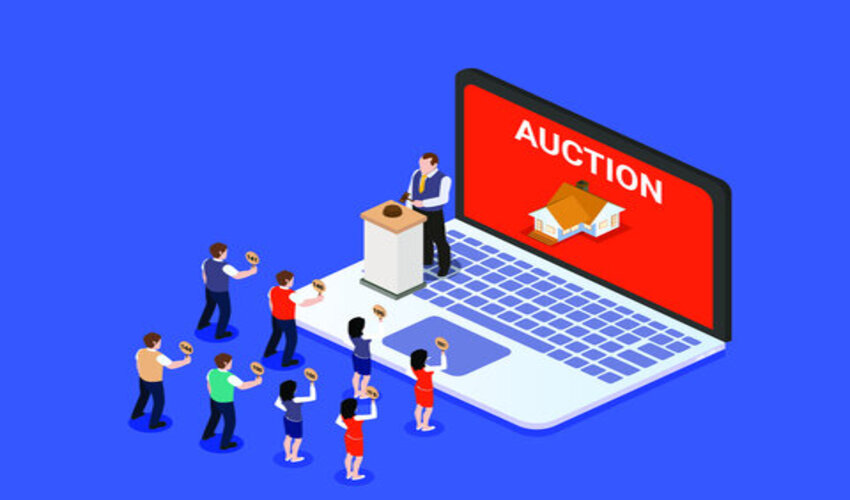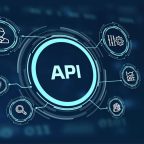Last updated on July 4th, 2025 at 06:41 am
Industries across various sectors are undergoing significant technological transformations, and the auctioning sector is no exception. The transition from traditional, in-person bidding to online platforms represents a profound evolution in this field. This article explores this transformation, offering a comprehensive, step-by-step guide on constructing an auction website. It provides valuable insights, tips, and advice to assist you in making well-informed decisions.
Why Opt for an Online Auction Website?
While traditional auction methods boast a rich history, online auction platforms have largely supplanted them, providing unmatched accessibility, convenience, and speed.
The shift to online auctions is motivated by several key factors:
- Eliminating Intermediaries: Developing an auction website facilitates direct trading without the need for intermediaries.
- Cost Efficiency: Online bidding sites reduce substantial handling charges.
- Scalability: Modern platforms make business expansion effortless and scalable.
- Long-Term Cost Savings: Despite higher initial costs, they are outweighed by the recurrent expenses of physical auctions.
- Global Reach: Online auctions transcend geographical barriers, attracting bidders from anywhere.
- Language Versatility: Multi-lingual features on auction websites break language barriers, enabling trading in various languages.
Online platforms foster a more open and competitive environment, generating increased interest and activity in auctions. Additionally, they offer diverse marketing tools for attracting and retaining customers, often unavailable in traditional auction settings.
Steps to Develop a Captivating Auction Website
Constructing an auction website requires intricate stages and precise execution to ensure success. Every small task holds significance in the complex process of creating an auction web application. Below are specific guidelines to navigate through the process, ensuring informed decisions at every step.
1. Acquire a Domain Name and Web Hosting
Choosing a distinct, memorable, and value-driven domain name is crucial for your auction website. Aim for brevity, catchiness, and easy pronunciation, similar to iconic domains like eBay.com and Amazon.com, which have gained global recognition.
Various online services like Google Domains, NameCheap, Domain.com, or GoDaddy offer domain name purchases. Consider these tips when choosing a domain name:
- Choose top-level domain (TLD) names such as .com, .org, or .net.
- Verify the domain’s history using the Wayback Machine internet archive.
- Evaluate the domain rating using SEO tools like Ahrefs, SEMRush, or Moz.
Secure a web hosting account to accommodate your domain. Hosting options include shared servers and exclusive/dedicated servers. The latter provides a dedicated server(s) for a single business customer, ensuring autonomy but at a higher expense than shared hosting.
2. Choose Your Auction Model
Understanding different auction models is a key initial step in this process. There are six primary live auction models to consider:
- English Auction: Begins with a reserve price, escalating with each bid until the item is sold to the highest bidder.
- Penny Auction: Starts at a minimum price with fixed increments, and the highest bidder gets the item.
- Dutch Auction: Initiates at the highest price, progressively reducing until a bid exceeds the reserve price.
- Sealed Bid Auction: Participants bid once, without revealing current bids, and the highest bid wins.
- Vickrey Auction: The highest bidder wins but pays the second-highest bid amount.
- Double Auction: The auctioneer sets the clearing price by considering offers from multiple buyers and sellers.
3. Define Key Functionality
Establish user roles (admin, bidder, seller) and select an auction model, then finalize the desired features for your eCommerce auction site. Your tech partner will select the suitable tech stack to create a robust, feature-rich auction platform.
The specific business needs and demands often shape the feature list. However, certain essential features are crucial when creating an auction website:
- Secure Data Storage: Ensure secure storage of sensitive user information and transaction data.
- Newsletter Functionality: Incorporate a feature for sending newsletters after auctions to inform customers about new listings.
- Bidding Options: Implement various bidding strategies suitable for your auction website’s requirements.
- Auction Details: Display essential auction information like start and end times, upcoming auctions, item details, bidders, winners, etc.
- Payment Integration: Integrate popular payment gateways such as PayPal or Stripe for secure transactions.
- Messaging System: Enable transparent communication between sellers and buyers on the platform.
- Analytics Tools: Provide sellers with insights like product views, purchases, and conversion rates to promote their business.
- User Profiles: Allow users to register, log in, and manage their profiles with essential information.
- Search Functionality: Include a search bar to simplify product searches for customers.
- Bid Templates: Offer templates to simplify the bidding process for sellers with numerous products.
- Shopping Cart: Enable customers to collect items from various stores and purchase them in one transaction.
- Reviews and Ratings: Allow users to rate and review items/vendors and view ratings of products/vendors.
- User Management: Admins should manage and oversee seller and buyer profiles.
- Auction and Bidding Oversight: Enable admins to monitor and manage auction bids according to set rules.
- Shipping Features: Incorporate comprehensive shipping options to calculate delivery costs, timelines, and ensure timely delivery to customers.
4. Choose Your Website Development Approach
You can use ready-made solutions or order a website tailored to your specific needs. Let’s consider both options.
Off-the-shelf Solution:
Utilize pre-built solutions like WordPress plugins to establish an auction website. This approach requires minimal knowledge in software development but may pose a challenging task for complete beginners.
Custom Website Development:
Engage an experienced development company with a skilled team of developers to create a website tailored specifically to your requirements. This approach ensures future scalability and the addition of necessary functionalities without delving into technical matters.
5. Ensure Essential Technical Requirements are not Overlooked.
Evaluate the technical aspects essential for developing and optimizing your web application. Once specific technical requirements are outlined, developers can select appropriate technologies to implement your solution.
Consider the Website Structure, create Wireframes, estimate the expected Load, pay attention to Page Loading Speed, ensure Browser and Device Support, and address Legal Compliance for the website’s lawful operation.
6. UI/UX Design & Tech Stack Finalization
Craft an appealing and user-friendly UI/UX design, serving as the initial interaction point for visitors. Create website mockups, design logos, color schemes, and other UI elements to enhance the digital experience.
Finalize the technological stack for functionality, scalability, and security:
- Front-end technologies: HTML, CSS, JavaScript, React, or Vue.js.
- Back-end technologies: Node.js or Ruby on Rails.
- Database: MySQL or MongoDB.
- Payment gateway: Stripe, Braintree, or PayPal.
- Messaging API: Twilio, SendGrid, or Mailchimp.
- Analytics: Google Analytics or Mixpanel.
- Cloud services: Amazon Web Services or Microsoft Azure.
7. Assemble Your Development Team
Establish the development team, whether in-house or hired remotely. Share the product vision and business goals, determine the development approach, and utilize project management tools for effective organization.
8. Develop an MVP
Build a Minimal Viable Product (MVP) focusing solely on core features. This approach aims to establish a product-market fit, reduce time-to-market, and gather customer feedback for future enhancements.
9. Ensure Thorough Testing
Undertake comprehensive testing, including unit testing, integration testing, white-box, black-box, alpha and beta testing, and regression testing. Addressing issues before the final launch ensures a higher quality product.
10. Launch the MVP
Activate the web server and make the site live. If necessary, grant access to a limited audience for feedback. Continuous analysis of user needs and potential feature additions is crucial for ongoing development and optimization.
Choose an IT Team You Can Trust
When selecting an IT partner, consider their experience, reputation, communication style, and transparency. Seek client references and testimonials to validate their reliability and competence. Assess their expertise, adaptability, and alignment of values with your organization. Additionally, scrutinize their security measures for robust data protection.
At iSKY.SOLUTIONS, we understand the importance of a reliable IT partner. Our experience and commitment to quality make us a trustworthy choice. If you have inquiries or need guidance, feel free to reach out to us.



